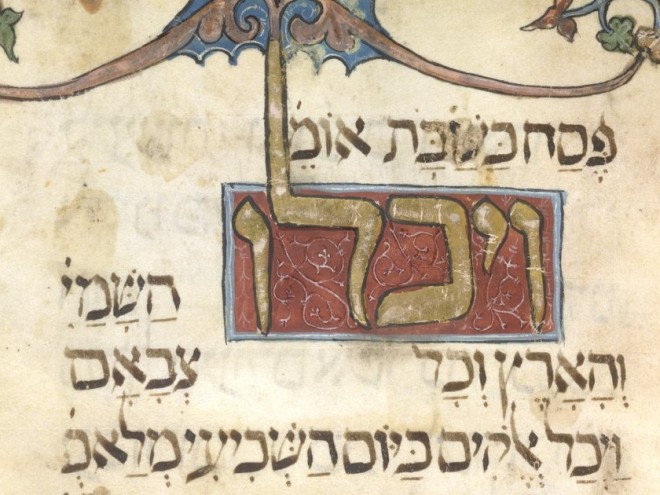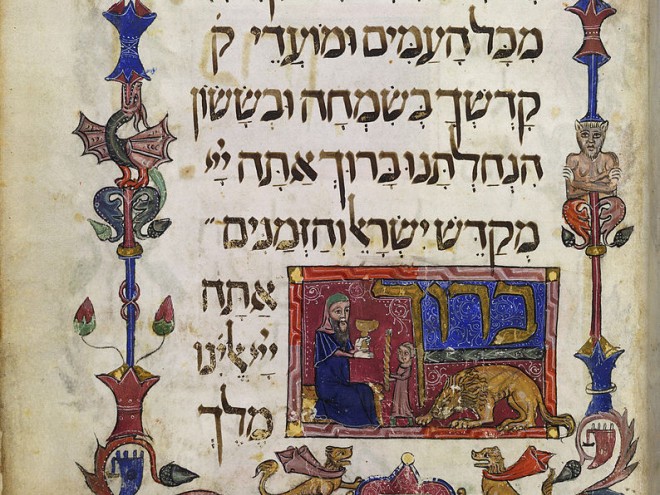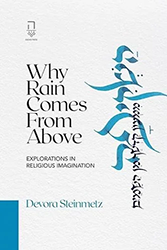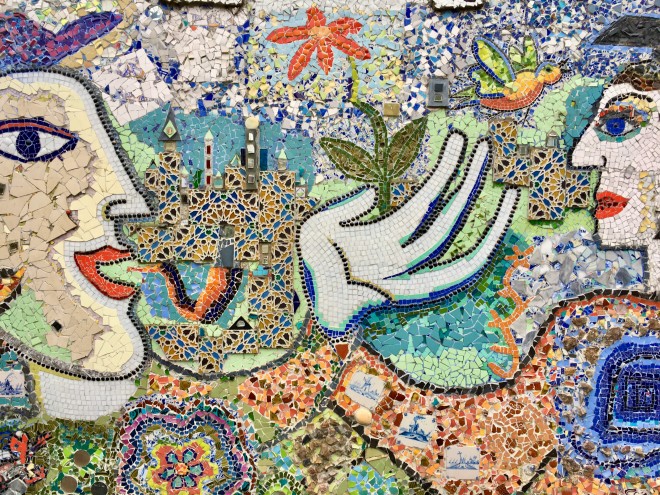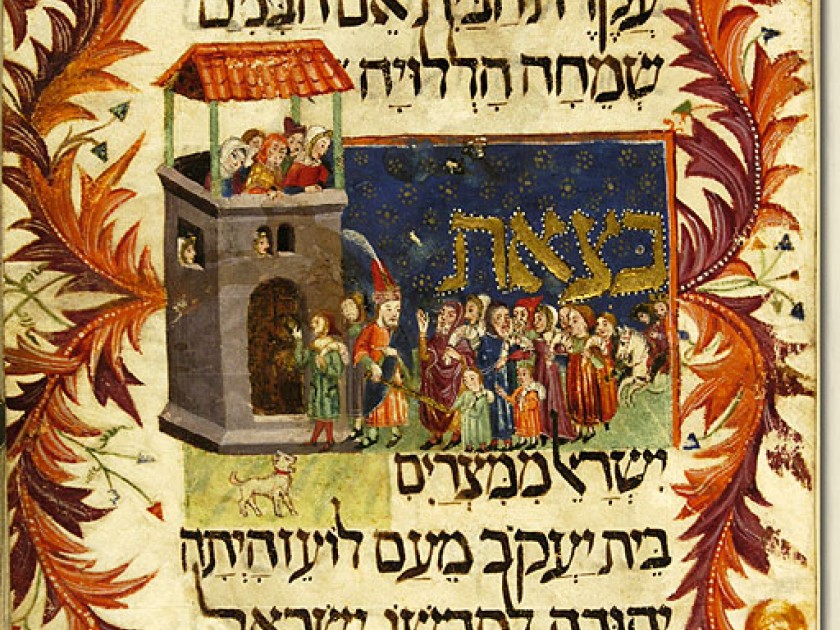
Illustration in the Kaufmann Haggadah, 1300s
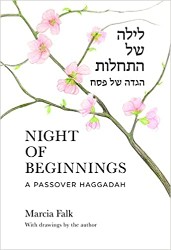
Night of Beginnings: A Passover Haggadah
by Marcia Falk
With original blessings and readings, gender-inclusive translations, and text-inspired illustrations, Marcia Falk’s Night of Beginnings offers an innovative adaptation of the Passover Haggadah.
Her text includes a full retelling of the Exodus — noticeably absent from the traditional Haggadah — which re-centers the Passover story as a Biblical narrative as opposed to rabbinic interpretation. Falk also includes kavanot, designed to assist the reader in elevating Seder rituals through thoughtful practice.
To ease the reader into deeper exploration, the Haggadah is printed with color-coded pages that identify the genre of each text. While following the order of a traditional Seder, Falk’s Haggadah focuses on the themes of concealment, revealment, and self-awareness, which the author suggests are central to self-actualization and freedom.
Night of Beginnings is intended for an adult audience. As we might expect from Marcia Falk, it is a text-centered, literary exploration of Jewish ritual, made accessible in Hebrew, English, and transliteration. It can serve as the sole text for a Seder or as a valuable resource for additional readings. Night of Beginnings encourages readers to break free from the traditional Haggadah text and explore retelling the Passover story in a bold new way.
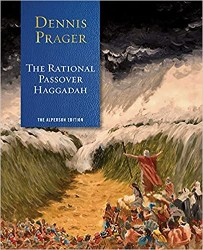
The Rational Passover Haggadah
by Dennis Prager
Relying on reason to explain the text, The Rational Passover Haggadah offers the opportunity to consider the importance of ritual, the historical accuracy of Exodus, and timeless questions about the relationship between God and the Jewish people in our modern world.
The Rational Passover Haggadah does this by interspersing thought-provoking articles with the traditional Haggadah text; this guides readers in discussions for any time of the year but is especially appropriate when sitting together to celebrate Passover.
For example, following the recitation of the traditional four questions, the author suggests four additional questions we might ask, including “Must the Seder be a religious experience, or is it enough for it to be a family and/or national Jewish experience?” While encouraging Seder participants to first consider these questions on their own, Prager also offers his own explanations which may spark further deliberation.
The design of the Haggadah — its text-centered interpretive approach — and the focus on additional articles for discussion makes The Rational Passover Haggadah best suited for adult audiences. The text is provided in Hebrew and English, without transliteration. Quotes from other modern thinkers, such as Rabbi Jonathan Sacks and Dr. Jordan Peterson, are interspersed to support the author’s analysis.
The Rational Passover Haggadah is a valuable addition to the Passover Seder, allowing participants to consider Judaism’s central themes with Prager’s clarity of thought and appreciation for difficult questions. It may be used independently or as a source for supplemental readings.
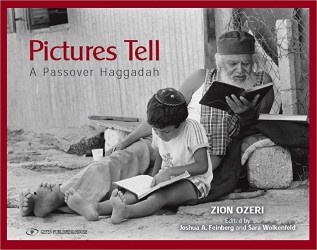
Pictures Tell
by Zion Ozeri
Pictures Tell is an opportunity to explore the images of Zion Ozeri — a noted photographer of the Jewish experience — to deepen your engagement with the themes of Passover.
Ozeri’s photographs are thoughtfully placed to encourage their use as primary texts and examine Jewish practice and contemporary concerns.
Comparing the interpretation of photographs to texts, Ozeri writes:
“‘One can approach a visual text in much the same way. The first question we might ask is, ‘What do I see? What is the pshat, or simple reading?’…. Finally, it’s time to make connections: ‘How does this image connect to a particular text in the Haggadah? How does it exemplify or amplify an aspect of our Passover observance? How does it reveal, clarify, or challenge a deeper theme of our faith?’”
QR codes attached to several of the photographs extend the conversation by providing links to source sheets on Sefaria, one of several partners in developing this new Haggadah. Additional QR codes allow you to listen to Passover songs from Jewish communities around the world. Contributions by contemporary Jewish thinkers, such as Professor Deborah E. Lipstadt, Rabbi Daniel Bouskila, and Rabba Sara Hurwitz, will deepen the experience .
This Haggadah includes the traditional text in Hebrew and English. While best used by an adult audience, the Haggadah’s multimedia approach makes it accessible to younger audiences as well.
